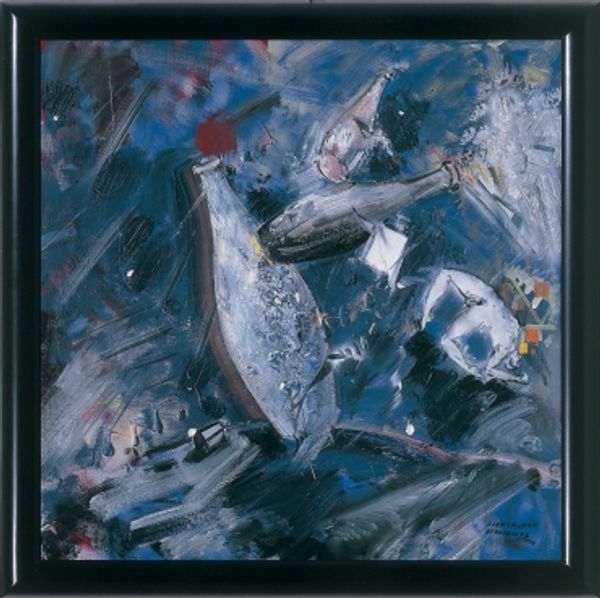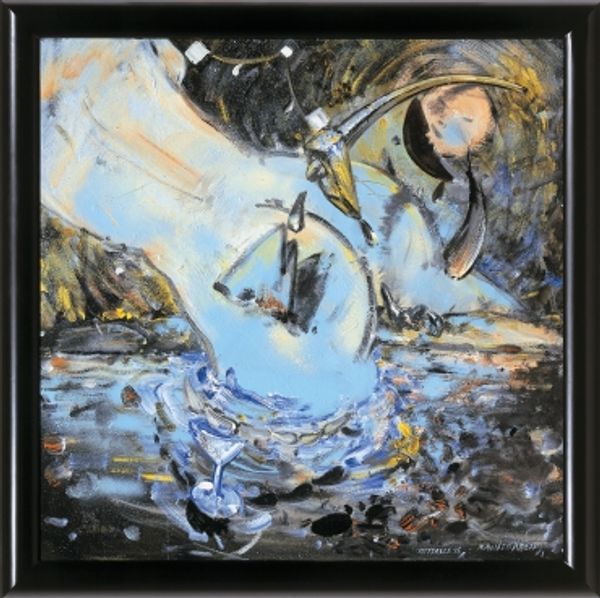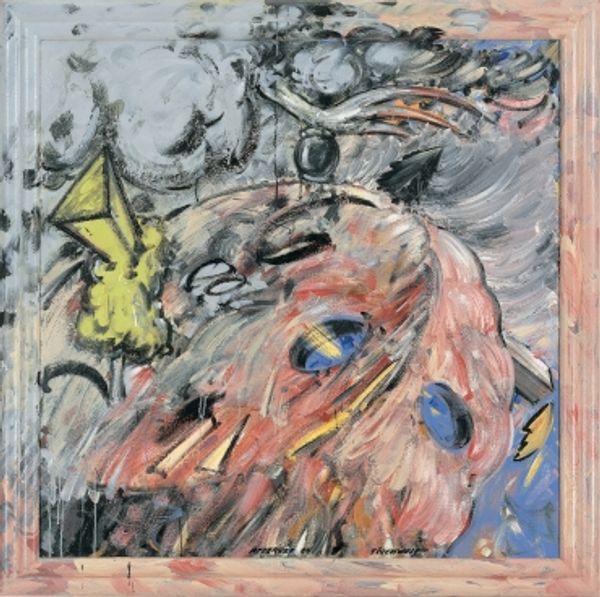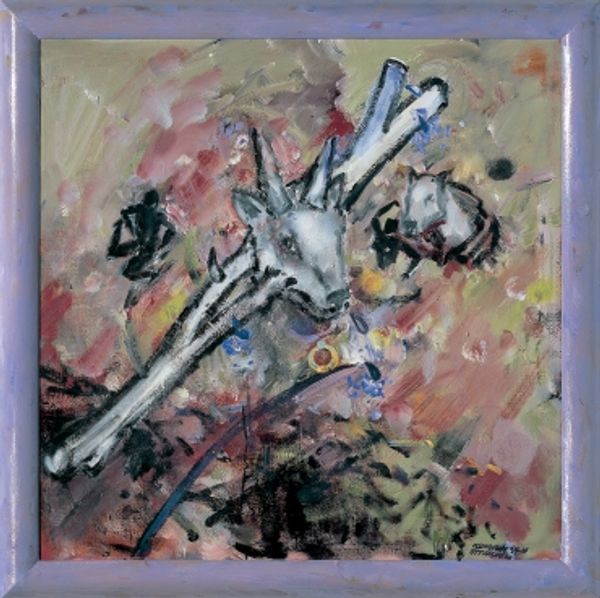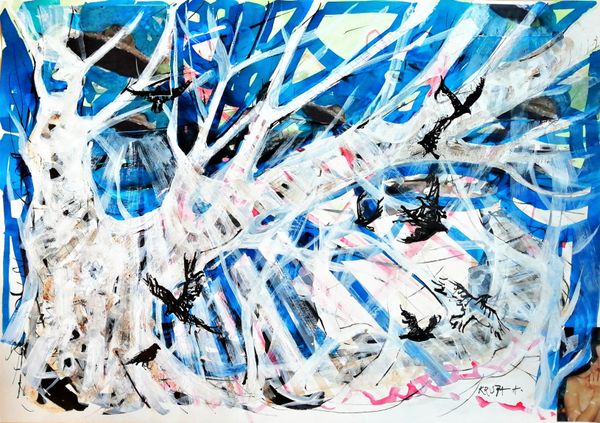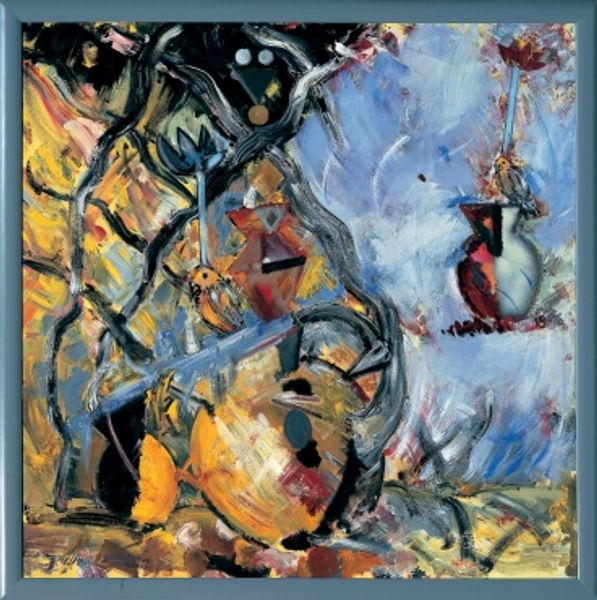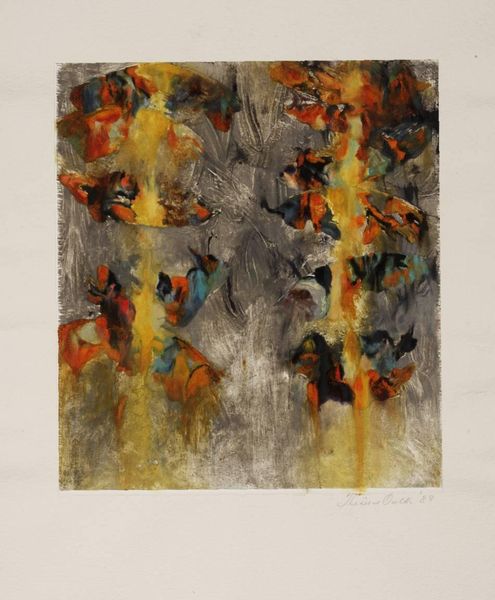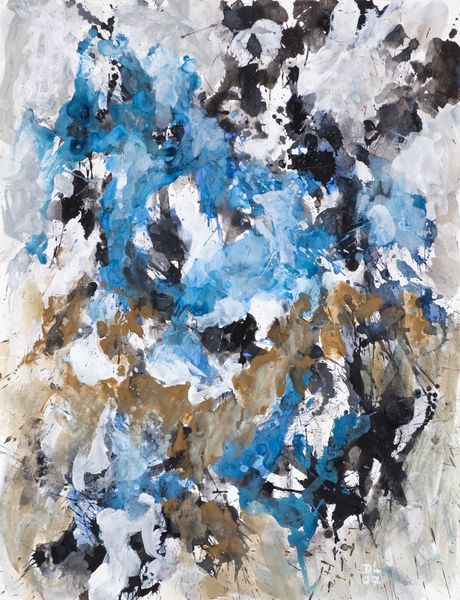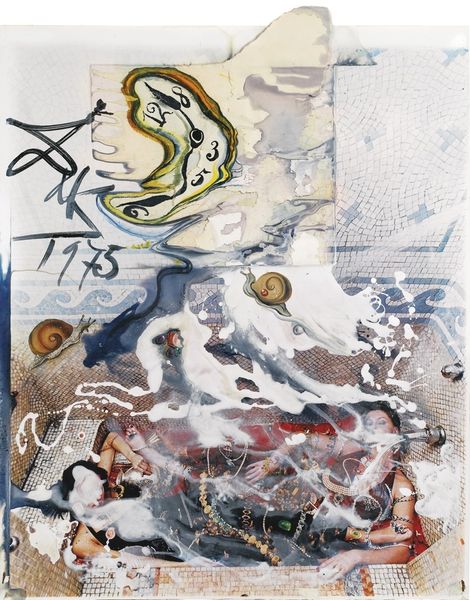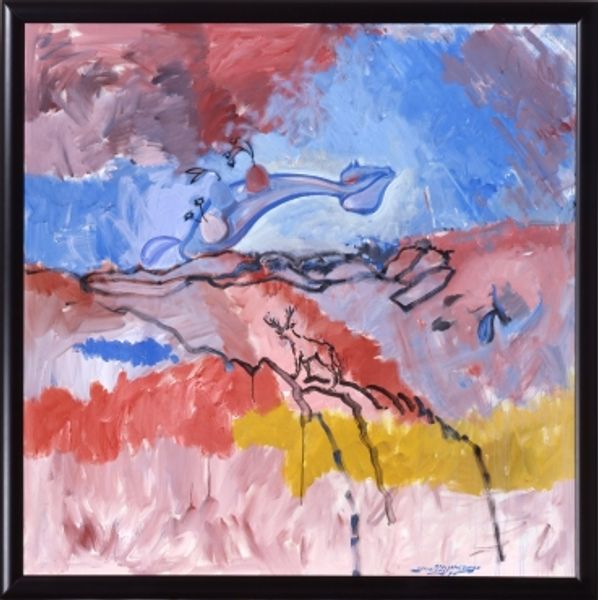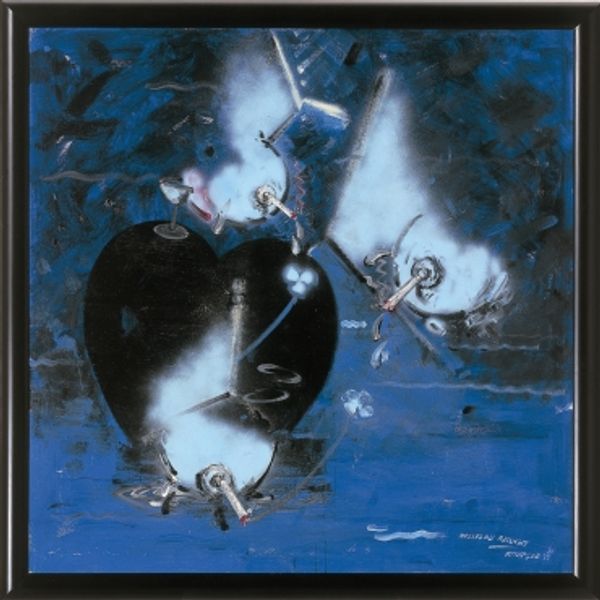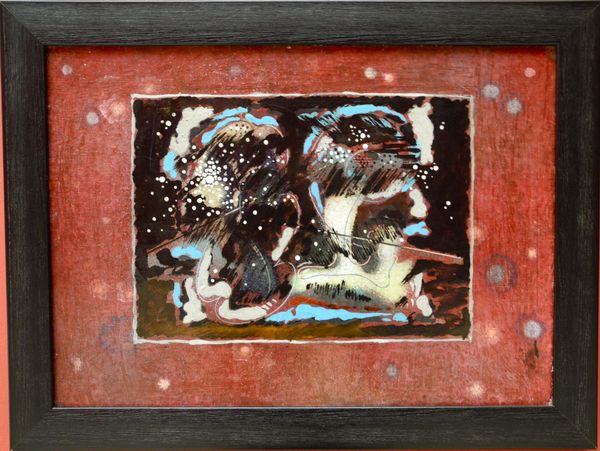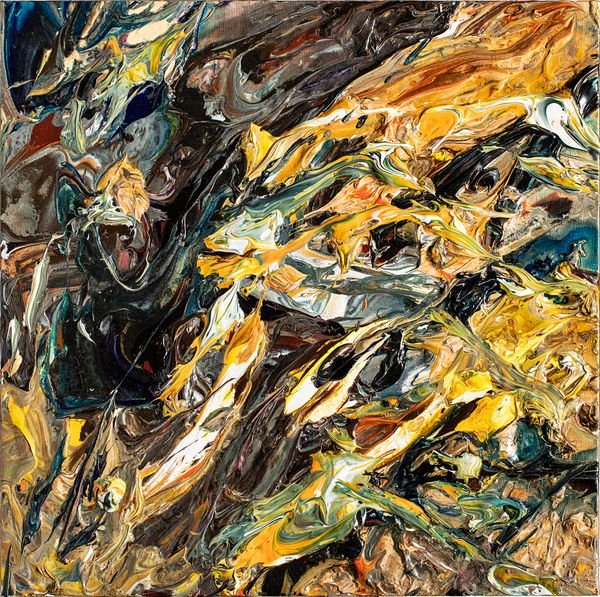
Copyright: Christian Attersee,Fair Use
Curator: Christian Attersee's "Jesus Pause," completed in 1996, immediately strikes one with its chaotic energy, a maelstrom of acrylic and mixed media on canvas. Editor: Yes, that energy—it almost feels… visceral. Like looking at raw materials, still being shaped by unseen forces. Is that a rabbit I see at the center? Curator: You've got a keen eye. The figure is somewhat representational and reminiscent of a figure with a rabbit head emerging from what could be an industrial landscape. Considering Attersee’s background, the symbolism woven throughout becomes even richer when viewed through a post-structuralist lens, exploring themes of identity, transformation, and the fragmented self. Editor: Absolutely. And thinking about materiality, it's hard to ignore the layers. Look at how the underpainting peeks through, those oranges and yellows fighting their way to the surface, under the blacks and greys, almost battling it. There’s a real tension there. How do you feel it connects to broader narratives, historically or even currently? Curator: I would be interested in discussing about connections between Surrealism, Expressionism, and today's issues of displacement and the loss of identity. It provokes discussion about ecological damage. In terms of labor and value, there is tension between its possible interpretations and its execution. Attersee deliberately blurs distinctions, making "Jesus Pause" not just a piece of art, but also a social statement. Editor: It makes one question what we see, it is clear, but not self-evident. This reminds me, with its technique and means, that value exists not merely in a finished form, but in the very act of creation, a dialectic captured beautifully here. Curator: Precisely, and as we examine how gender, ecology, and societal critique interweave with Expressionist practices, the piece is a window onto so much more. Editor: I concur. To walk away from "Jesus Pause" is to not just depart from a canvas, but from an introspective question—a testament to the social and political engagement art can foster.
Comments
No comments
Be the first to comment and join the conversation on the ultimate creative platform.
